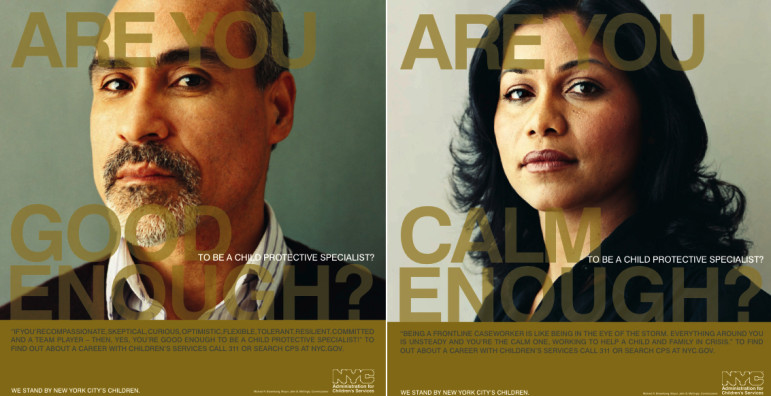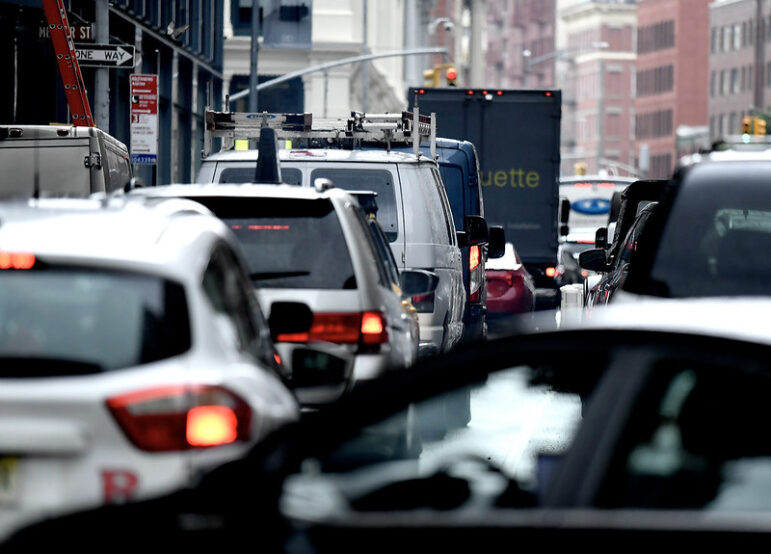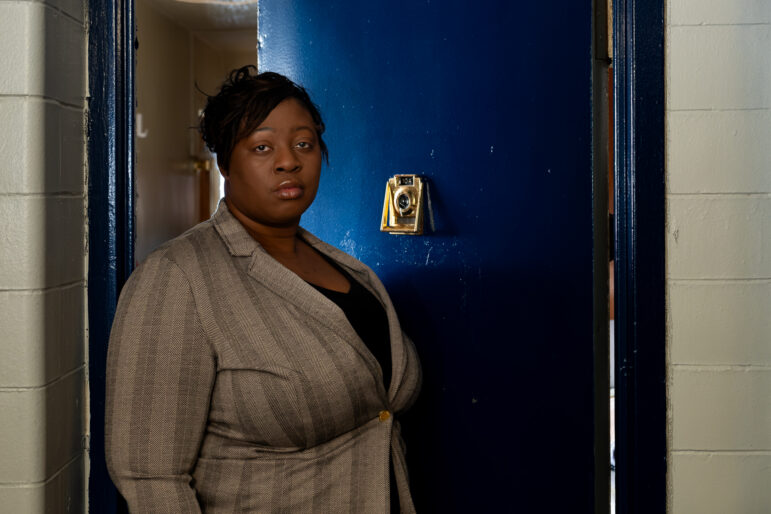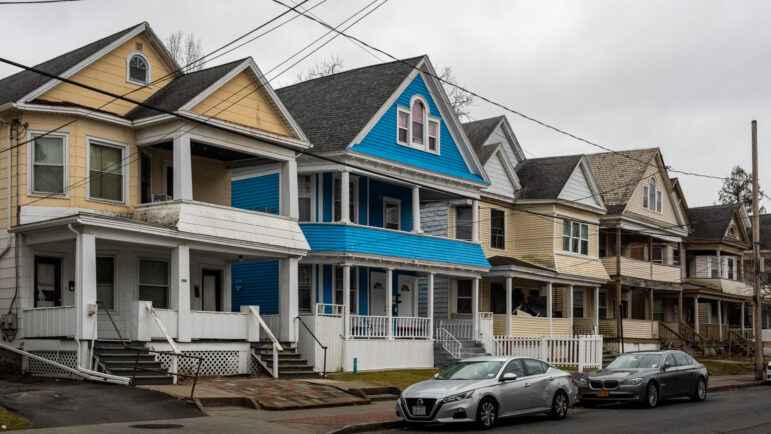
NYCACS
The city's Administration for Children's Services plastered subway cars with this recruitment drive beginning in 2009.
In 2008, then commissioner for New York City’s Administration for Children’s Services John Mattingly ran an ad in the New York City subway system asking: “Are you strong enough…Are you smart enough…Are you kind enough to be a Child Protection Specialist?”
During his time as ACS commissioner, Mattingly was haunted by two horrific child deaths, and was plagued, as well, by the difficulties he encountered trying to communicate effectively with his frontline staff what it was he thought they should be doing.
Still, Mattingly believed child protective investigations were the one tool he had to keep children who were being abused and neglected from suffering alone, and he became determined to find and retain people who had the greatest potential to do such a painful, complex and high-risk job well.
One of his major goals was to circumvent city guidelines that require that ACS select its hires from a list of people who have passed a standardized test, rather than those recruited by ACS itself. Under a system originally created in the 1920s to ward against corruption, ACS is required to pick one out of every three people on the list, ranked in order based on their scores, and then return the rejected applicants back to the list for future consideration.
Mattingly hoped to find people for the job of Child Protection Specialist that would function less like government bureaucrats—good-natured or surly, competent or incompetent, depending on the individual bureaucrat, but essentially limited in their functions and thinking—and more like truth-seekers. He hoped to find people who would be able to “reach out to people in a way that understands where they are coming from, while at the same time being aware that there are things in families that they do not want to share with anybody outside, most especially with a child welfare agency.”
Particularly galling to Mattingly was the fact that the Department of Citywide Administrative Services wouldn’t let him see the test or know what criteria it used to assess the people whose life and death decisions he would be responsible for. “Who would think that if you wanted a complicated job like this done, the way in which to seek somebody to do it would be to put a very bureaucratic ad in the paper, and have people take a written test, while the people who design the test won’t even share it with experts in the field,” he said.
Like Mattingly, parent and child advocates around the city say they believe that if the city wants to improve child protective investigations, they need to hire, train and support workers to engage families at the highest levels.
More time, and a shift in the message sent workers about what’s most important in the job—would make a difference as well, said one former NYC CPS worker. Many workers, she said, do care about the families they investigate, and stay on the job despite feeling that they and their fellow workers are alone in a war zone.
Still, “at the end of the day,” she said, “the job is about numbers and about managing your cases. You have to go in, make your decisions, and get out. You know that a lot of families are only going to do what they need to do because you care about them, you spend time trying to understand them, and you connect them to the kinds of services they need. But that’s not a good way to do your job, because you have to go on to the next case.”
Advocates add that if the city wants to improve child protection, they need to insist on a higher standard of evidence introduced with urgency, before children spend time in care unnecessarily. In cases that involve charges of physical abuse to small children, for instance, frequently the suspicion of a single doctor who has no special training is enough to keep a child in care for months, or longer. Outside experts often conclude that the injuries weren’t caused by abuse, but it can take months to get their input heard.
They say they hope the administration’s commitment to improving investigations will address these fundamental issues.
Research offers little confidence
Others, however, say that while reforms can improve outcomes on the margins, the public should understand just how limited our knowledge of child protection is.
Sometimes when bad things happen to children after a child protective investigation, it’s because an investigator made an error. But often it’s because the situations investigators are assessing are enormously complex, and because we just don’t have the science to tell us which children ultimately will prove to be at greatest risk. They say understanding this truth is not a way of making excuses for child deaths or the failures of child protection, nor is it an argument against improving investigations. Rather, it is a way to broaden the conversation about interventions that we do know increase child safety.
It is particularly when a child dies, they say, that the mayor and commissioner could be promoting public health interventions that have been proven to reduce abuse and neglect.
At the heart of the issue is the question of just how safe—even under the best of circumstances—child protective investigations can make children.
John Fluke is the associate director for systems research and evaluation at the Kempe Center for the Prevention of Child Abuse and Neglect and the University of Colorado School of Medicine and a national expert on child protection. After years of research, says Fluke, child protection still has no scientific way of knowing whether most of the children they come in contact with would be better off left at home or taken into foster care, and experts can’t seem to come to much consensus either.
Indeed, a seminal study done by researchers at the University of Chicago’s Chapin Hall in the 1990s found that when presented with case studies, even scholars and veterans in the field only agreed on whether or not removal was the best course of action slightly more than half the time. Often they noticed the same risk factors that all workers are trained to look for—things such as a past history of mental illness or domestic violence, past trauma, poverty, drug use, a lack of social support or a past history of child protective investigations.
What they couldn’t agree on was whether the child’s best interest lay in keeping the children at home, or putting them in foster care. At the time, the authors of the report expressed their dismay at their findings by stating: “What happens in a case should not be a crapshoot.”
Sometimes the difficulty lies in figuring out the meaning of a particular incident or the risk factors in a family to a child’s safety, given the limited time and information investigators have, and the complexity of the cases. “So much about understanding what a family needs is about spending time with families, gaining their trust, and making sense of complex dynamics,” says Mary Ellen Shea, a social worker at Lawyers for Children. But investigators typically have neither the trust nor the time to understand those dynamics, which makes it more likely that they will rely on their gut.
Dawn Post, co-borough director of the Children’s Law Center in Brooklyn, says that particularly when parents present well, investigators may fail to see risks to children. Post recalls a case where the alleged perpetrator, the child’s mother’s boyfriend, was white and a teacher. The child told her that his mother’s boyfriend kept lead in the freezer to bring down the swelling after the boyfriend beat him. Post reported this to the ACS lawyer in hopes that the situation would be investigated further. But, she says, the child was not removed until after the child was injured.
These blind spots can be especially large with teenagers, says Hal Silverman, attorney in charge of litigation at Lawyers for Children, which represents teenagers and children who are voluntarily placed in foster care. “Sometimes there are mental health issues, alcoholism, corporal punishment, or sexual abuse on the part of the caregiver, but the worker just focuses on the child’s acting out, not the underlying reasons for the child’s behavior,” Silverman says.
Other times, workers use their own angry interactions with parents as a way to assess the safety of a child.
Kaela Economos, supervising social worker at the Brooklyn Defender Services Family Defense Practice, which represents parents in child protective cases in Brooklyn, says she sees this all the time. “We worked with ACS over the course of two years to develop a set of guidelines for addressing mental health issues in families. One of the basic tenets of the guidelines was that a parent’s anger in response to an investigation can be a normal reaction, and in and of itself does not indicate a major mental health issue,” Economos says.
“Some workers are able to step back and understand this,” she adds. “But a lot of times workers decide that a parent’s anger during the investigation is proof of a mental health problem or a threat to the child, and then you know things are going to be a lot more difficult for the family.”
Taken twice
Caitlin Becker, supervising social worker at The Bronx Defenders, which represents parents in Bronx Family Court, recalls one case she worked on in which a father had developed PTSD after being shot in front of his home. In 2011, after the couple had a new baby, he tried adjusting his medication so he could hear their newborn crying in the night, but his symptoms worsened.
On a visit to his therapist, he described incidents of abuse that had happened in his childhood, but because his thinking and speech were confused, his therapist thought he was describing abuse he was inflicting his own children, she called in a report, and the children were removed. Becker says the father described his six children as panicked—screaming, running and hiding—the night CPS workers and the police came to remove them, while he frantically wrote down his telephone number six times on six pieces of paper and stuffed them in the pockets of all his children, desperate to know that they would be able to contact him if they were in trouble.
After 20 days, the judge sent the children home, determining that they were not at imminent risk of harm. But the original caseworker who’d removed the children continued to monitor the family, and she and the father clashed frequently. She continued to see the father as threatening, and eventually she convinced the judge to return the children to foster care.
Some four months after they re-entered the system, a new worker took over the case and reported the strong and positive bond she witnessed between the children and their father. Soon after, the children were returned home, and the case was closed.
Problematic ‘solutions’
Even when it’s clear that children are being harmed, says Fluke, very often what’s not clear is what would be better: leaving them in a home where there are risks, or removing them from their families and placing them in foster care. “What we know is that the outcomes for children who are placed in foster care are generally not good,” says Fluke. “Would they be any better off if they stayed at home? The data we have is extremely equivocal.”
Faced with so much uncertainty, says Fluke, how a family is ultimately treated often comes down to factors outside the family. When workers feel confident in their engagement skills and in the services they have to provide families, research shows they are less likely to remove a child. When they feel supported by their agencies, they are also less likely to remove.
Ultimately, though, whether or not they remove a child, says Fluke, comes down to a question of values. Get one worker or judge, and you’ll get a slap on the hand or supportive services to help your family. Get another worker or judge, and you and your children may be separated for years.
Workers and judges have that latitude because the definitions of abuse and neglect, as well as the allegations against parents, are frequently vague. “Often they’re things like: ‘Mother has bipolar disorder and has not followed up on proper treatment,” says Allison Brown, a social worker who previously worked with parents in Queens Family Court. Advocates say that particularly in cases where the allegation is neglect—which make up approximately 70 percent of all CPS cases—there is greater room for interpretation.
More safeguards
ACS commissioner Gladys Carríon acknowledges that child protection is not an exact science. Still, she says, over the years the city has put in place safeguards to ensure that decisions are not subjective. Workers must confer with supervisors, and ACS hires clinical and investigative specialists whom workers can consult when cases prove challenging.
Carríon also hopes to implement a team decision-making model used in other systems around the country that will reduce subjectivity yet further.
Lastly, the fact that the system today takes in far fewer children than they did in the past suggests that greater care is given to balancing the possible damage done to leaving children in their homes with the damage done by taking them out.
And yet, the problem remains that as of yet, science has not given us good tools to predict the future or know which children, given similar risk factors, will be most harmed. In the 1960s, when child protection systems were instituted in states across the country, scholars and policymakers assumed that knowing which children needed to be removed from clearly negligent or violent parents would require nothing but common sense. What we have come to realize is that usually common sense is not enough—and science doesn’t make the answers clear either.
It is this fact, critics say, the public needs to consider when a child dies and we focus our attention on what we could do better to protect at-risk children in the future. It is precisely when a child dies, they say, that Mayor de Blasio could be talking about interventions that have been proven to reduce abuse and neglect.
This December, State Senator Daniel Squadron called for $100 million in new spending to make all Medicaid-covered, first-time mothers eligible to be visited by Nurse-Family Partnerships, a program of home visiting for mothers with babies under age 2 that has been shown to cut the number of substantiated reports of abuse and neglect by half. The intervention offers new mothers practical information on caring for their babies.
But in large part, say its creators and practitioners, the intervention works because nurses develop close relationships with parents, and parents are willing to share concerns with them that they might not share with anyone else.
“We know home-visiting does very well at preventing abuse and neglect,” says David Lansner, a civil rights lawyer and former co-chair of New York State Citizens Review Panel for Child Protective Services. “That’s one thing the mayor could say when a child dies. He could say, ‘We need to take what’s been proven successful and bring it up to scale.'”
All City Limits’ child welfare coverage is underwritten by the Ira W. DeCamp Foundation.









One thought on “The Limits of Protection: Fixing Child Abuse Investigations”
The Adverse Childhood Experience study from the CDC shows that all child abuse harms children permanently. CPS’s purpose for existing is to minimize abuse and prevent fatalities. That’s important, but “alive” is a low place to set the bar. Stop Abuse Campaign is turning one county in New York into a model where the focus is on preventing child abuse from starting, thus unburdening CPS and allowing them to follow best practices, hire and retain the best people and prevent damaged children from experiencing further damage. And if you think that’s a good idea, click here https://www.change.org/p/stop-erie-county-s-children-being-abused-and-murdered